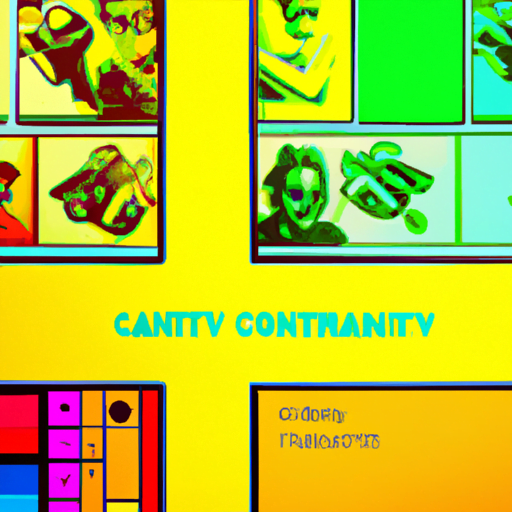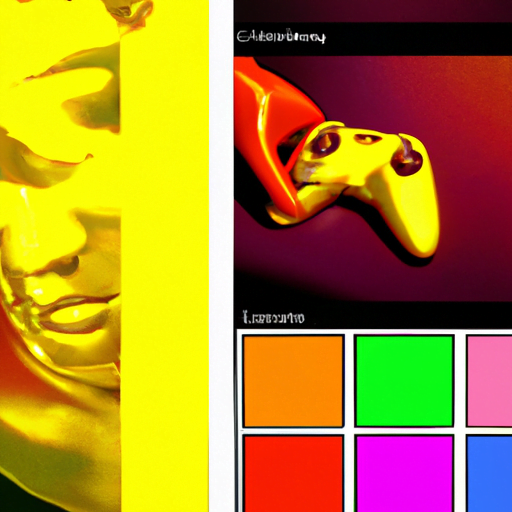
-
Table of Contents
- Designing Gaming Community Interfaces
- The Importance of Gaming Community Interfaces
- Understanding the Needs of the Gaming Community
- Designing Engaging Community Features
- 1. Forums and Discussion Boards
- 2. Social Networking Integration
- 3. Leaderboards and Achievements
- 4. Events and Tournaments
- Case Study: Discord
- Conclusion
Designing Gaming Community Interfaces

Gaming communities have become an integral part of the gaming experience, providing players with a platform to connect, collaborate, and compete with others who share their passion. As the popularity of online gaming continues to soar, designing effective and engaging gaming community interfaces has become crucial for game developers. In this article, we will explore the key elements and best practices for designing gaming community interfaces that foster a sense of belonging, encourage social interaction, and enhance the overall gaming experience.
The Importance of Gaming Community Interfaces
Gaming is no longer a solitary activity confined to a single player’s experience. With the rise of online multiplayer games, players now have the opportunity to connect with others from around the world, forming communities and building relationships. A well-designed gaming community interface can significantly enhance this social aspect of gaming, creating a space where players can interact, share experiences, and collaborate.
Furthermore, gaming communities can have a direct impact on a game’s success. A strong and active community can lead to increased player retention, higher engagement levels, and even attract new players through positive word-of-mouth. On the other hand, a poorly designed community interface can hinder social interaction, discourage participation, and ultimately lead to a decline in player engagement.
Understanding the Needs of the Gaming Community
Before diving into the design process, it is essential to understand the needs and expectations of the gaming community. Conducting user research and gathering feedback from players can provide valuable insights into their preferences and pain points. Here are some key considerations:
- Communication: Players value seamless communication channels within the gaming community interface. Whether it’s text chat, voice chat, or both, providing options for players to communicate effectively is crucial.
- Accessibility: Designing an interface that is accessible to players of all abilities is essential. Consider incorporating features such as adjustable font sizes, colorblind-friendly options, and support for assistive technologies.
- Customization: Allowing players to personalize their gaming community interface can enhance their sense of ownership and identity within the community. Providing options for custom avatars, profile backgrounds, and themes can go a long way in creating a personalized experience.
- Discoverability: A well-designed interface should make it easy for players to discover and join relevant communities. Implementing search functionality, recommended communities based on interests, and clear navigation can help players find their desired communities quickly.
Designing Engaging Community Features
Once the needs of the gaming community have been identified, it’s time to design features that encourage engagement and foster a sense of community. Here are some key features to consider:
1. Forums and Discussion Boards
Forums and discussion boards provide a space for players to engage in conversations, share tips, and discuss game-related topics. These platforms can be organized into different categories or topics to facilitate easy navigation and encourage participation. Implementing features such as upvoting, tagging, and threaded discussions can further enhance the user experience.
2. Social Networking Integration
Integrating gaming community interfaces with popular social networking platforms can help players connect with their existing friends and expand their gaming network. By allowing players to import their contacts or connect their accounts, game developers can streamline the process of finding and adding friends within the gaming community.
3. Leaderboards and Achievements
Leaderboards and achievements provide players with a sense of competition and accomplishment. By prominently displaying leaderboards and highlighting achievements, game developers can motivate players to strive for higher ranks and engage in healthy competition. Additionally, implementing features such as weekly or monthly challenges can keep players engaged and encourage them to return regularly.
4. Events and Tournaments
Organizing events and tournaments within the gaming community can create a sense of excitement and camaraderie. By providing a platform for players to participate in competitive events, game developers can foster a strong community spirit and encourage players to interact with one another. Implementing features such as live streaming, spectator modes, and in-game rewards for event participation can further enhance the experience.
Case Study: Discord
Discord, a popular communication platform for gamers, serves as an excellent case study for effective gaming community interface design. Discord offers a range of features that cater to the needs of the gaming community, including:
- Voice and Text Chat: Discord provides both voice and text chat options, allowing players to communicate seamlessly during gameplay.
- Server Customization: Users can create and customize their servers, including roles, permissions, and channel organization, providing a personalized experience.
- Community Discovery: Discord offers a “Discover” feature that recommends servers based on a user’s interests, making it easy to find and join relevant communities.
- Integration: Discord integrates with popular gaming platforms, such as Steam and Twitch, allowing users to connect their accounts and streamline their gaming experience.
Discord’s success can be attributed to its user-centric design approach, focusing on the needs and preferences of the gaming community. By continuously iterating and improving its interface based on user feedback, Discord has become a go-to platform for gamers worldwide.
Conclusion
Designing effective gaming community interfaces is crucial for game developers looking to create engaging and immersive gaming experiences. By understanding the needs of the gaming community, implementing features that encourage social interaction, and learning from successful case studies like Discord, game developers can create interfaces that foster a sense of belonging, enhance player engagement, and ultimately contribute to the success of their games.
